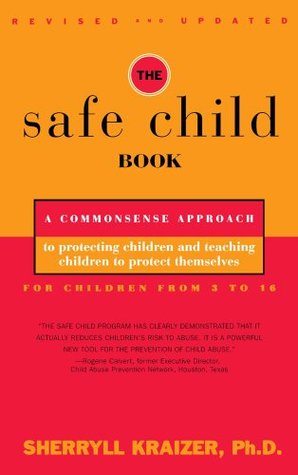Kindle Notes & Highlights
Read between
May 18 - May 18, 2017
Tickling is a good example. If too much tickling makes your children feel uncomfortable or “funny” inside, they will learn with you that it is all right to say “Stop.” In the future, they will be able to generalize, to transfer that ability to speak up when they are touched in some other way that makes them uncomfortable.
say, “Well, if you hadn’t been riding your bike so fast, you wouldn’t have fallen off and cut your leg,” we are telling children that getting hurt is a function of their own mistakes. This belief will prevent them from telling us they have been abused or hurt because they will be certain they did something to cause or deserve it.
Prevention of sexual abuse can be taught without talking about sexual abuse. Children don’t need to be told what sexual abuse is, who perpetrators are, how they operate, what they do or why.
While most pedophiles are men, his research shows that at least 20 percent of all perpetrators are female.
It is important to use accurate names
for body parts as a way of teaching healthy respect for our bodies.
when children learn to say no to someone who pinches their cheek, or picks them up, they learn to say no to more intrusive harmful touching.
One of the worst possible consequences of prevention training would be the withdrawal of normal adult affection and play with children.
Privacy is not the same as secrecy. Privacy means you can be by yourself or keep something to yourself. Secrecy means you’re bound not to tell. Privacy respects individual needs. Secrecy creates shame in sexual abuse. It’s important that children know the difference.
The belief that adults are always in the right can interfere with a child’s ability to listen to his or her own inner voice.
Never tell your children whom they can trust. An abuser can be anyone. Children need to make their own decisions about whom they trust.
The first is that there is only one person who is with you all the time, who can be responsible for keeping you safe, all the time. That person is you.
The second basic idea is that when children are alone, it is their job to take care of themselves. It is not their job to take care of the adults in the world. If
There are four rules to follow when you’re by yourself. 1. Stay an arm’s reach, plus a little bit more, away from strangers. 2. Don’t talk to strangers. 3. Don’t take anything from strangers, even something of your own. 4. Don’t go anywhere with strangers.
Talking about this rule doesn’t make sense to children. You need to show them what you mean and then practice.
When children are with an adult and someone offers candy, samples, or other treats, they should be taught to ask permission before taking it. When they are by themselves or with their friends, they must never take anything from someone they don’t know.
We cannot ask our children to judge situations involving strangers by the rationality of the request any more than by the appearance of the stranger.
Adults who need help should go to another adult.
The following checklist can be used to make sure your children know their name, address, and phone number. Use it also to give them emergency numbers, to establish basic rules, and to set
expectations. STAYING ALONE CHECKLIST My name: Neighbors: My parents’ names: Police: My address: Fire: My phone number: Doctor: Resource people: Work: Other If the phone rings, I will: If someone comes to the door, I will: If there is an emergency: If I get bored: If I get scared: My responsibilities are:
The central message underlying all of these
stories is this: There isn’t anyone in the entire
world that your children can’t say no to, if they are asked to do something they think is wrong, that could hurt them, or that th...
This highlight has been truncated due to consecutive passage length restrictions.
Do not be fooled. Everything we know about child sexual abuse tells us that its effects are long-lasting and devastating.
What if a child approaches you in the park and wants to talk? A parent is present, but not really watching. One option is to ask the child if Mom or Dad said it was okay for him to talk to you. If not, tell him he should get permission before talking to you because he doesn’t know you. • What if you are giving samples or treats away as a part of your job or at a school event? Always ask parents if it’s all right to give the item to their children. This reinforces the parents’ role as protectors when they are with their children. • What if you need to drop something off for a business associate
...more
Children show us more often than they tell us what they like and don’t like. We can give them permission to speak up and let them know that we don’t feel rejected just because they ask us not to do something.


